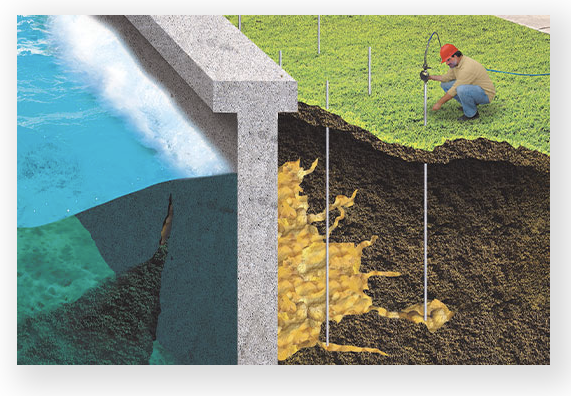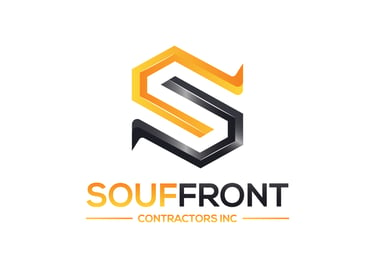Expert Engineering Reports for Comprehensive Seawall Inspections, Repairs, and Full Construction.
Comprehensive Guide to Seawall Repair:
There are several approaches to repairing a seawall, each suited to different types of damage and materials. Here are some common methods used by seawall repair specialists:
Oscar Souffront
11/11/20245 min read


Why Seawall Repair is Essential
Seawalls are continuously exposed to water, salt, sunlight, and wind, which can lead to degradation over time. If left unchecked, these forces can weaken the seawall, leading to structural damage that endangers property and potentially increases repair costs. Timely seawall repairs prevent these issues from escalating, preserving the stability of the seawall and extending its lifespan. If you're also planning new construction or modifications near the shoreline, make sure you understand the permitting process—here’s a full step-by-step guide to applying for a seawall permit.
Common Problems Requiring Seawall Repair
Several issues may necessitate seawall repairs. Recognizing these common problems can help you take preventive action before they worsen.
1. Cracks and Spalling
Cracks are one of the most visible signs of seawall damage. They can result from structural movement, water pressure, or temperature fluctuations. Over time, these cracks can expand, leading to more severe deterioration. Spalling, or the chipping and flaking of concrete, is often a result of moisture and salt infiltrating the concrete, weakening it and causing pieces to break off.
2. Soil Erosion Behind the Seawall
When soil starts to wash away from behind the seawall, it indicates that water is seeping through or around the structure. This erosion weakens the wall’s support, potentially causing it to lean or even collapse.
3. Corrosion of Metal Components
Many seawalls, especially those made with reinforced concrete or steel, contain metal elements prone to corrosion from constant saltwater exposure. Rust weakens these components and can lead to significant structural issues if not addressed promptly.
4. Sinkholes and Subsidence
Sinkholes or depressions near the seawall indicate that soil erosion has reached an advanced stage. These gaps or dips in the ground may signify voids forming behind the seawall, which can destabilize the structure and lead to collapse.
5. Water Seepage and Poor Drainage
Water pressure from behind the seawall can cause seepage if the drainage system is inadequate. Proper drainage systems, such as weep holes and filters, are critical to prevent water from accumulating and exerting pressure on the seawall.
Types of Seawall Repair Techniques
There are several approaches to repairing a seawall, each suited to different types of damage and materials. Here are some common methods used by seawall repair specialists:
1. Grouting
Grouting involves injecting a cement-based or chemical material into cracks or voids within or behind the seawall. This technique helps stabilize the structure by filling gaps, stopping water seepage, and preventing soil erosion. Grouting can be an effective solution for minor cracks and erosion issues.
2. Concrete Resurfacing
When the surface of a concrete seawall begins to crack or spall, resurfacing may be the best option. A new layer of concrete is applied to the existing surface to restore the wall's strength and appearance. Concrete resurfacing can also include applying sealants or coatings to improve durability and water resistance.
3. Installing Tiebacks or Anchors
If a seawall begins to lean due to soil erosion or poor support, installing tiebacks or anchors can provide additional stabilization. These elements are anchored deep into the ground or back into a stable structure, offering support to keep the seawall upright and secure.
4. Soil Stabilization Techniques
Soil stabilization is necessary when significant erosion occurs behind the seawall. This may involve injecting stabilizing materials into the soil or using riprap (rock) to provide physical support. Soil stabilization prevents further erosion and helps to reinforce the seawall’s base.
5. Replacement of Corroded Components
In seawalls containing metal elements, it’s common to replace corroded steel bars or other metal components to restore structural integrity. This repair method is essential for reinforced concrete seawalls where rust can severely weaken the structure.
The Seawall Repair Process: Step-by-Step
Understanding the steps involved in seawall repair can help property owners better plan for and oversee the repair process.
Step 1: Inspection and Assessment
The first step is a thorough inspection to assess the extent of the damage. Professional inspectors will look for cracks, erosion, rust, and other signs of deterioration, as well as test the soil behind the seawall for stability.
For a deeper understanding of what a proper inspection involves, see this helpful guide:
Bulkhead Inspection – Why It Matters and How to Do It Right
Step 2: Developing a Repair Plan
Once the inspection is complete, seawall specialists will develop a repair plan tailored to the type and severity of damage. This plan may involve one or more repair techniques based on the wall’s condition and the property’s specific needs.
Step 3: Implementing the Repairs
With a plan in place, the repair team will begin work. This may include injecting grout, replacing metal components, stabilizing soil, or resurfacing the seawall. Each repair is performed carefully to ensure durability and effectiveness.
Step 4: Post-Repair Inspection
After repairs are complete, a final inspection is conducted to ensure the seawall is stable, water-tight, and capable of withstanding the elements. This inspection provides peace of mind that the repairs have been successful and the structure is ready to protect your property once again.
How to Prevent Seawall Damage
While seawalls will always require some maintenance, taking preventive measures can significantly extend their lifespan. Here are a few tips to keep your seawall in good condition:
Regular Inspections: Schedule annual or biannual inspections to catch early signs of wear and tear.
Proper Drainage: Ensure the seawall has adequate drainage to prevent water from accumulating and causing pressure damage.
Erosion Control: Use riprap or vegetation to prevent soil erosion near the seawall.
Monitor Water Levels: High tides and storm surges can lead to overloading, so it’s essential to monitor these conditions and make repairs promptly if necessary.
Cost of Seawall Repair
The cost of seawall repair can vary depending on factors such as the type of seawall, the severity of the damage, and the repair method required. Minor repairs like crack filling may cost around $500 to $1,500, while more extensive repairs involving grouting, soil stabilization, or component replacement could range from $2,000 to $10,000 or more. It's always wise to get multiple quotes and work with reputable professionals to ensure quality repairs.
FAQs on Seawall Repair
1. How often should a seawall be inspected?
Annual inspections are recommended, though seawalls in high-risk areas may need more frequent checks, especially after storms.
2. Can seawall repairs be done DIY?
Small repairs may be manageable by property owners, but significant repairs should be done by professionals to ensure safety and longevity.
3. How long does a typical seawall repair last?
Well-executed repairs can extend a seawall’s lifespan by 10 to 20 years, depending on maintenance and environmental factors.
4. What materials are best for seawall repair?
Concrete and steel are commonly used due to their strength and durability. Composite materials are also gaining popularity for their resistance to corrosion.
5. Can seawall repairs prevent flooding?
Yes, repairing cracks, stabilizing soil, and improving drainage can help prevent flooding by maintaining the seawall’s effectiveness.
6. How can I tell if my seawall needs repair?
Look for signs like cracks, leaning, rust, erosion, and water seepage. If you notice any of these, it’s time to schedule an inspection.
Conclusion: Protecting Your Property with Regular Seawall Repair
Maintaining a seawall is essential for any coastal property owner, as it provides crucial protection against erosion, flooding, and other environmental threats. Regular repairs and inspections ensure that your seawall remains sturdy and effective, safeguarding both your property and the surrounding shoreline. By investing in professional repairs and following preventive measures, you can extend the lifespan of your seawall, avoid costly future damage, and enjoy peace of mind.
© 2012-2024 Souffront Contractors & Engineers | All Rights Reserved
Estimates@souffrontcontractors.com
Phone: 877-420-7220
© 2024. All rights reserved.


